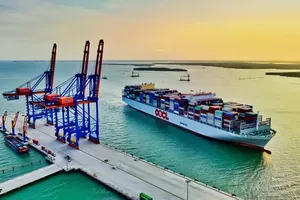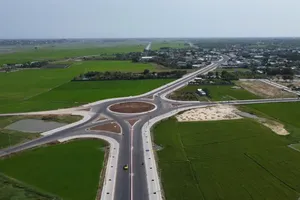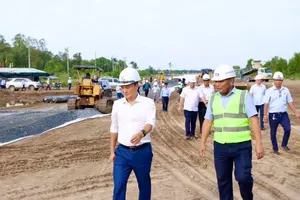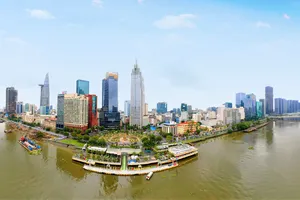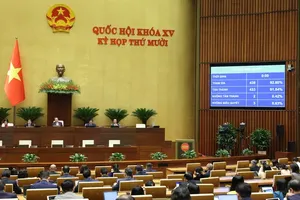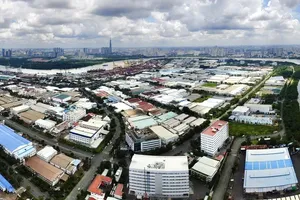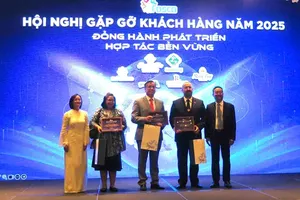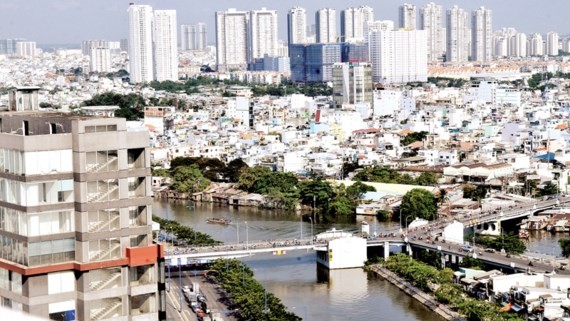
The adjusted plan has been developed by Southern Institute for Spatial Planning (SISP) under the Ministry of Construction and German Insar Consulting Company.
HCMC region comprises seven provinces and cities namely Dong Nai, Binh Duong, Binh Phuoc, Tay Ninh, Long An, Tien Giang and HCMC.
The plan has been approved by the Prime Minister, determining the region to be a big urban area, the motive power of the country’s economic development, international traffic gateway with high adaptability toward sustainable and balanced development.
The region is a modern intellectual, service and unique cultural center. Of these, HCMC is a nuclear urban area, multifunctional economic hub with synchronous and modern infrastructures on a level with modern cities in the Southeast Asia region.
The Southern Institute for Spatial Planning says that compared to the plan approved in 2008, the new plan will be adjusted according to four principles comprising balanced development by changing economic structure to increase income for outskirt residents, centralizing local industry, balancing supplies of infrastructure and social services.
The second is high adaptability in which the region will be elastic and closely connect local communities. The third is connectivity in traffic and information and communications between HCMC and provinces with a common information and management system for the entire region.
Fourthly, sustainable places will intensify food security in localities and ensure self-supply of diversified services.
The region will develop under concentration and multipolarity development model with four sub-regions, expand the central urban area to the east and north, where is adjacent to Can Gio and Cat Tien forest areas, adapt to areas prone to flooding and head toward compressed development in areas with high terrain.
Insar Consulting Company said that compressed development will solve a very important problem for the HCMC region now, where climate change impact has worsened flooding. This matter was not fully mentioned in the 2008 plan.
Coordination in traffic, water resource management
At the conference, chairman of the HCMC People’s Committee Nguyen Thanh Phong said that there should be a coordination policy among provinces and cities to avoid conflicts in investment attraction and limitations in promoting resources.
They should strengthen traffic connectivity and give priority to developing public transport systems to tightly connect with each other in the region.
Mr. Tran Thanh Liem, deputy chairman of the People’s Committee in Binh Duong province, said that the province has 14,000 hectares of industrial land with occupancy rate reaching 60 percent so far. Because the province has no large road to Tan Cang seaport so severe traffic jam usually occur at 4-5 p.m. everyday.
Deputy chairman of the People’s Committee of Binh Phuoc province expressed the province’s attention to traffic Binh Duong and HCMC. If traffic jam occurs there, cargo transport from Binh Phuoc to the two localities will also be congested.
Therefore, Binh Phuoc proposed the Government to soon implement ring road projects in HCMC and build approach roads to seaports and inland ports to synchronize the region’s traffic system.
Deputy chairman of the People’s Committee of Ba Ria-Vung Tau province Le Tuan Quoc suggested the Government to consider solving mechanism and procedure problems to speed up some key traffic projects such as Bien Hoa-Vung Tau expressway and Bien Hoa-Vung Tau railway.
Agreeing with provinces’ point of view that traffic is an important factor to increase regional connectivity, Minister of Planning and Investment Dang Huy Dong added another factor, which is not less important, of water resource. The regional plan should carefully calculate water source, stream flow, salt intrusion and climate change to have a suitable infrastructure plan.
Deputy minister of Natural Resources and Environment Nguyen Thi Phuong Hoa proposed the consulting firm to pay attention to waste management and treatment in upper reaches provinces to prevent pollution in the lower reaches.
Ms. Hoa said that the ministry has transferred depression observation data to provinces and cities and suggested the consulting firm to supplement that matter into the plan because depression levels are different in areas.
Clarifying feasibility
Secretary of the city Party Committee Nguyen Thien Nhan proposed Insar Consulting Firm to further analyze reasons for the slow implementation of some plans such as traffic while adjusting the regional plan. From these analysis, they can propose solutions to prevent the issue from recurring.
According to Mr. Nhan, seven provinces in the region account for 9.2 percent of the country area and 21 percent population but contribute up to 44 percent of Gross Domestic Product. However, the central Government’s investment in the region has been inappropriate especially in infrastructure.
Hence, it is needed to re-estimate infrastructure development investment in the region for the next 15 years, make clear the ratio of investment in the region compared to the country to have a more overall look.
Deputy Prime Minister Trinh Dinh Dung required relevant sides to emphasize the importance and opportunities to develop the eastern area and the northern development axis because these are important gateways of seaports, airports and international exchange. The regional plan should name development limitation areas such as the southern part of HCMC.
The deputy PM said that the plan was very important to the entire southern key economic zone, especially HCMC. The conference was the last meeting to adjust the plan before submitting it to the Prime Minister for approval.
Four sub-regions of HCMC region
The central urban area comprising HCMC and adjacent areas such as Duc Hoa, Can Giuoc, Ben Luc districts in Long An province; Thu Dau Mot, Di An, Thuan An, Ben Cat and Tan Uyen in Binh Duong province; Bien Hoa, Nhon Trach, Trang Bom, Long Thanh and part of Vinh Cuu district in Dong Nai.
Of these, HCMC will be the nuclear urban center of the region; Binh Duong new city will be the driving force in the north and Bien Hoa-Long Thanh-Nhon Trach in the east.
Cu Chi-Hau Nghia-Duc Hoa will be the motive power in the northwest, Ben Luc-Can Giuoc-Hiep Phuoc will be eco urban area in the southwest.
A sub-region has the area of about 5,164 square kilometers with population by 2030 forecast to approximate 15.7 million. Urbanization rate by 2030 will be about 85-90 percent.
Sub-region in the north-northwest comprises Binh Phuoc, Tay Ninh and northern Binh Duong. Eastern sub-region includes Dong Nai and Ba Ria-Vung Tau. Southwest sub-region includes Tien Giang and Long An.

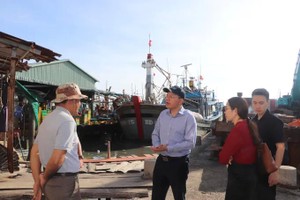
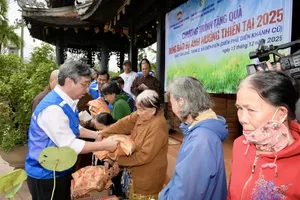


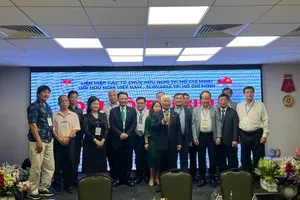

)
